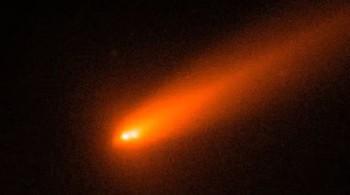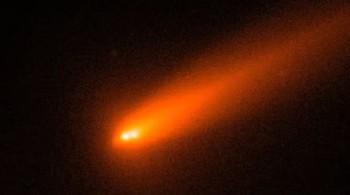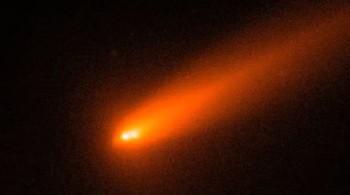
Comet C/2025 K1 (ATLAS) breaks into 3 after coming close to Sun
In a rare and breathtaking celestial event, Comet C/2025 K1 (ATLAS) has broken into three distinct pieces after making a close approach to the Sun. This extraordinary occurrence was captured by astronomers using Italy’s Copernicus telescope, providing stunning visual evidence of the comet’s fragmentation. The comet’s nucleus became unstable after it passed close to the Sun on October 8, resulting in the separation of two large chunks and a smaller third piece.
Comet C/2025 K1 (ATLAS) was discovered in May 2025 by the Asteroid Terrestrial-impact Last Alert System (ATLAS) survey, a robotic astronomical survey system designed to detect near-Earth asteroids and comets. Initially, the comet was expected to be a relatively small and unremarkable object, but as it approached the inner solar system, its behavior became increasingly fascinating. The comet’s close encounter with the Sun, also known as perihelion, occurred on October 8, when it came within 1.2 astronomical units (AU) of the Sun’s center.
As the comet drew closer to the Sun, its ices began to vaporize, creating a bright coma and tail. However, the intense heat and gravitational forces exerted by the Sun took a toll on the comet’s structure, causing its nucleus to become unstable. The resulting fragmentation of the comet’s nucleus has left astronomers with a unique opportunity to study the internal composition and dynamics of comets.
The images captured by the Copernicus telescope show two large chunks of the comet’s nucleus, approximately 2,000 kilometers apart, with a smaller third piece visible to the left of the pair. These fragments are thought to be the remnants of the comet’s original nucleus, which has broken apart due to the intense forces experienced during its close approach to the Sun. The separation of these fragments is expected to continue, with the pieces slowly drifting apart over time.
The breakup of Comet C/2025 K1 (ATLAS) provides scientists with a rare chance to study the composition and structure of comets. By analyzing the fragments and their trajectories, researchers can gain insights into the comet’s internal makeup, including the distribution of ices, rocks, and other materials. This information can help scientists better understand the formation and evolution of our solar system, as well as the potential hazards posed by comets and other near-Earth objects.
The fragmentation of Comet C/2025 K1 (ATLAS) also highlights the dynamic and unpredictable nature of comets. These objects are often referred to as “dirty snowballs” due to their composition of ices, rocks, and other materials, but they can be highly unstable and prone to breakups. The study of comets like C/2025 K1 (ATLAS) can help astronomers better understand the processes that shape our solar system and the potential risks posed by these objects.
In conclusion, the breakup of Comet C/2025 K1 (ATLAS) is a remarkable and fascinating event that provides scientists with a unique opportunity to study the composition and dynamics of comets. The images captured by the Copernicus telescope offer a stunning visual representation of the comet’s fragmentation, and the resulting fragments will continue to be monitored by astronomers in the coming weeks and months. As we continue to explore and learn more about our solar system, events like this remind us of the awe-inspiring beauty and complexity of the universe.




